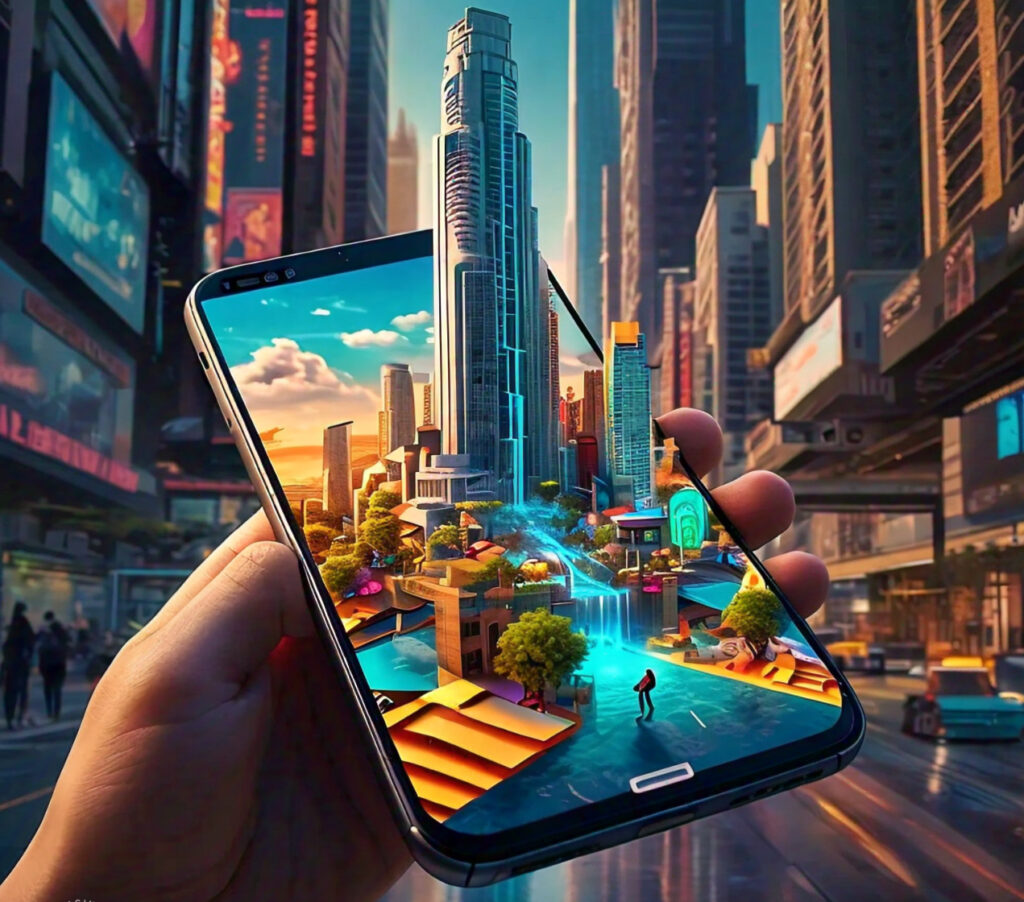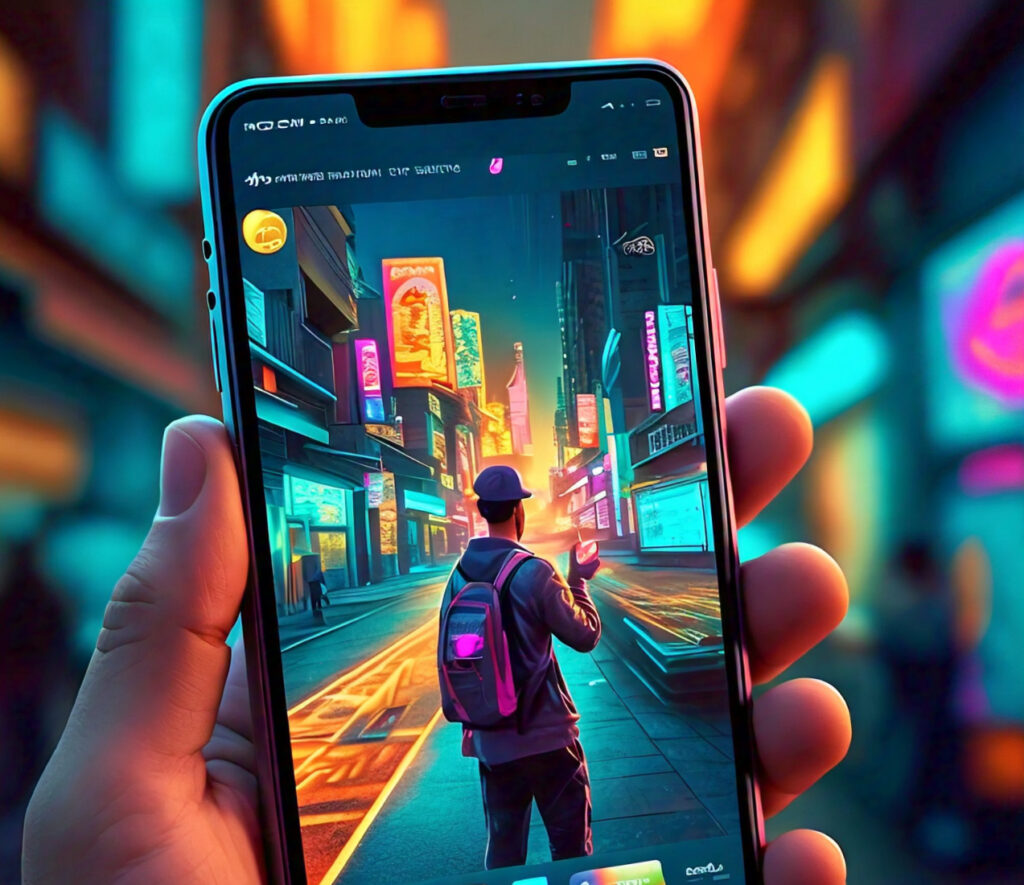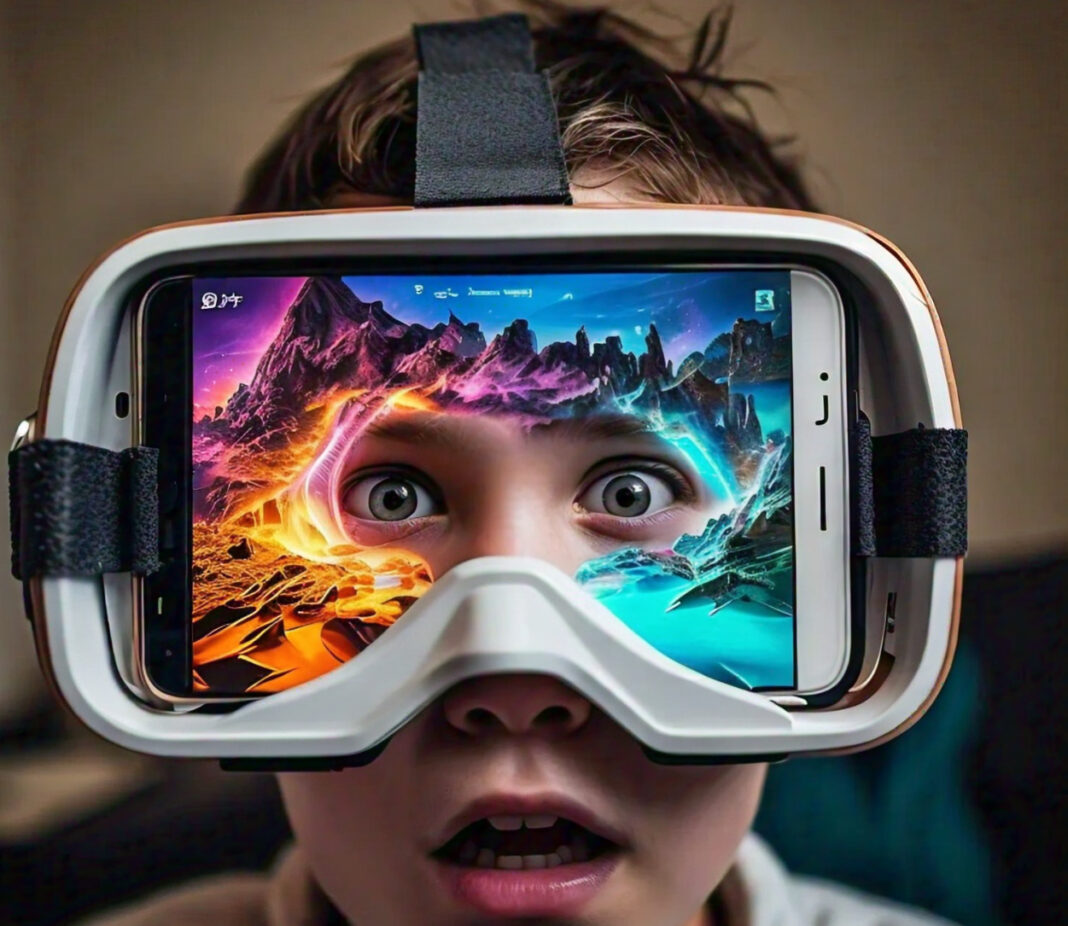The recent time of the meticulous world of mobile applications is being set abuzz with the technology of Augmented Reality (AR), much like the revolution that could change the whole scene.
AR has become a game-changer, breaking the boundary between the digital and real world. This hi-tech technology overlays digital information in the real world, allowing the users to experience it immersively and be able to interact with it.

With the increase in power and penetration of smartphones, mobile apps using AR have unfolded a new dimension of interaction with our surroundings, the way information is consumed, and a whole different engagement with brands.
This article dials deeper into the world of fascinating AR mobile app implementations for rich insights, considering their applications, benefits, challenges, and prospects, and how they revolutionize many industries while changing perceptions and interactions of people in the world.
Understanding Augmented Reality in Mobile Apps
What is Augmented Reality?
AR technology makes the real-world environment more detailed and accurate by adding a layer of digital information and media, such as 3D models, images, videos, and text. Unlike VR, where a completely artificial environment is created, AR helps in blending digital elements with the real world and creating a mixed reality experience.
AR combines the camera, GPS, and other features of a smartphone to interact with the real-world environment of a user. On top of that, it overlays digital information over the video feed coming from the camera. This makes the experience interactive, informative, and fun.
How AR Works in Mobile Apps
- Environment Recognition: The application recognizes, through the device’s camera, the environment surrounding an individual.
- Data Processing: The captured image or video stream is processed by the app to identify specific markers or objects, or a spatial environment.
- Content Overlay: After detection, the application overlays digital information on top of the environment.
- User Interaction: A user can start an interaction with AR elements through touch, gestures, motion, or voice.
- Real-time Update: The AR content moves and gets updated along with the movement or change in the location of the user’s device.
Augmented Reality Applications in Mobile Technology
Today, AR technology is being widely used across various domains as it has huge potential to transform many different industries toward great user experiences. Let’s take a look at some of the most prevalent AR applications in mobile technology:
1. Retail and E-commerce
AR changed everything about shopping online or in any physical shop. Some of the capabilities that AR-enabled mobile applications bring to a customer include the following:
Try before buying: clothes, accessories, makeup
Preview before shopping: furniture, decoration items, wallpapers
Scan products for in-depth knowledge of the product while shopping in a physical store
Indoor navigation, which helps customers in big retail stores, supported by AR techniques
These features not only enhance the shopping experience but also reduce returns and enhance customer satisfaction.
- Education and Learning
AR is revolutionizing learning and imparting by infusing it with interactive elements and making the process all the more stimulating. AR-integrated learning applications can do the following:
- Make educational content pop up and come alive with the help of 3D models and associated animations using textbook illustrations.
- Take immersive virtual views of already preserved and not-so-accessible researchers to history and other locations.
- Allows you to perform interactive science experiments and simulations.
- Using real-time translations and object recognition to learn different languages.
By making learning more experiential, AR helps improve retention and understanding which is taking place with difficult concepts.
3. Gaming and Entertainment
The gaming industry has been quick to adopt AR technology for the creation of truly immersive interactive experiences. Some of the popular examples are:
- One such is the Location-Based AR game, which encourages users to explore the outside world.
- AR Enhanced Board games and puzzles
- Interactive storytelling apps – characters will be brought into the real world.
- AR photo filters and effects for social media platforms
These applications not only revolutionized how people game but also motivated users to be physically fit and socially interactive.
4. Navigation and Travel
AR has opened an excellent prospect for navigation and tourism in such mobile applications that are capable of providing:
real-time translation of street signs and menus
walking directions powered by AR overlaid on the real-world
information about nearby points of interest with just a point of the camera
- Virtual tours of hotels and travel destinations
All the above features combined provide greater convenience and enjoyment in experiencing a new place for a traveler.
5. Healthcare and Medical Training
In healthcare, AR mobile apps are used in the following ways:
- Assisting surgeons during critical operations with real-time data visualization
- Providing interactive anatomy classes to medical students
- Allowing the patients to see options and treatment results
- Enhancing telemedicine by overlaying diagnostic information during video consultations
AR in healthcare not only improves patient care but also enhances medical education and training.
6. Automotive Industry
AR is exploding in the automotive industry with mobiles. Some of the app features in different applications that are available today are as follows.
- Virtual test drives and car configuration
- Manuals for maintenance and repairs created with AR
- Navigation with real-time traffic and hazard information
- Augmented Parking Assists with the help of AR Overlays
All the above feature application makes it easier for people to purchase their car and increase drivers’ safety.
Advantages of AR in Mobile Apps
AR implementation in mobile apps results in some added benefits for marketers and mobile users as well, which are described in the following points −

1. Improved User Engagement
AR creates active and immersive experiences that captivate the app user. This, in general, increases the frequency of app usage and session length.
2. Enhanced Decision Making
It eases the decision-making process as users can have a visual planning of the product/information in a real-time context.
3. Higher Efficiency
AR may slice processes from complex, operational assembly lines to complicated surgical procedures, thereby improving productivity and reducing errors.
4. Personalisation of Experience
AR applications can individualize content based on preference, location, and behavior to create more personal and relevant experiences.
5. Cost Reduction
AR can reduce physical samples, prototype, and staging costs in various industries such as retail and real estate.
6. Innovative Marketing Opportunities
AR provides a more immersive way for brands to engage with their customers, delivering memorable experiences that will generate word-of-mouth and strengthen brand loyalty.
Challenges in Implementing AR in Mobile Apps
While AR is undoubtedly very promising, there are still several issues in the way developers and businesses implement the said technology:
1. Hardware Limitations
Whereas most mobile devices lack certain sensors or are poorly processed to support advanced AR features, this limits limiting number of users who can use them.
2. Battery Drain
AR applications may pose serious energy requirements and are known to drain off battery faster on mobile gadgets.
3. Privacy Concerns
As AR apps require the use of cameras and location data, privacy issues are always raised-and it need to be addressed to build trust with their users.
4. Development Complexity
High-quality AR experiences are difficult to create and, apart from this, time-consuming and expensive compared to other apps.
5. User Adoption
Some users may be new to AR interfaces or find them somewhat tough to handle. This requires intuitive design and user education.
6. Content Creation
The creation of high-quality 3D models and AR content can be resource-intensive and needs to be originated on a regular note for the content to be relevant.
Future Trends in AR for Mobile Apps
With technology showing no sign of slowing down, below is a quick look at some key aspects of AR mobile apps that we can expect to materialize very soon:
1. 5G Integration
With the introduction of 5G networks, speed and latency on mobile devices will be much quicker; this will rapidly evolve technology, enabling the AR features to hold more complexity, and offering responsiveness for an improved experience.
2. Development of AI and Machine Learning in Augmentation
AI and machine learning integrations will make AR apps smarter, which can be done in a better understanding of the user’s behavior and environmental responses.
3. Improved Hardware
Stronger processors and special Chips for AR-enabling applications have been developed in mobile devices.
4. AR Cloud
While developing a shared AR infrastructure, it will be able to provide persistence in the AR experiences across devices and locations, therefore, making the AR ecosystem even more connected.
5. Haptic Feedback Integration
Integrating the technology of haptic feedback will provide a touch sense to the already immersive and realistic AR experiences.
6. Cross-Platform AR
Enhancements to AR development frameworks will continue to ease the creation of cross-platform experiences that can run seamlessly on all varieties of devices and operating systems.
Conclusion
AR in mobile apps stands for one huge step forward in the interaction with technology and the environment, which is altering many things right now. It is revolutionizing the way we perceive and interact with the outside world and opening new possibilities.
As described in the paper, AR in the mobile app has a wide range of advantages an improved level of user engagement and better decision-making to new marketing opportunities. Nevertheless, hardware limitations, privacy, and security issues, and the complexity of development remain unsolved.
Hence, the future of AR in mobile applications looks bright. Further enhancement by 5G, AI, and hardware boosts the immersive intelligent AR experiences. Therefore, we see AR becoming an integral part of our digital lives as developers move ahead with innovations.
The use of AR in mobile applications represents more of a cultural shift in how we interact with digital information rather than merely a technological trend. As this technology continues to evolve and mature, it will surely play an important role in shaping the future of mobile computing-opening up new avenues for innovation, creativity, and human-computer interaction.
In fine, AR in mobile applications is not an out-of-the-box addition but a potent tool that will change the way businesses, learning, and productivity function and create, in their totality, new kinds of entertainment and engagement.
The two worlds, digital and physical, will further blur in the days ahead, bringing edge-to-edge possibilities for developers, businesses, and users. Welcome to the Age of Augmented Reality: its impact on mobile apps is just the beginning of a more general change in the way we perceive and interact with the world around us.






